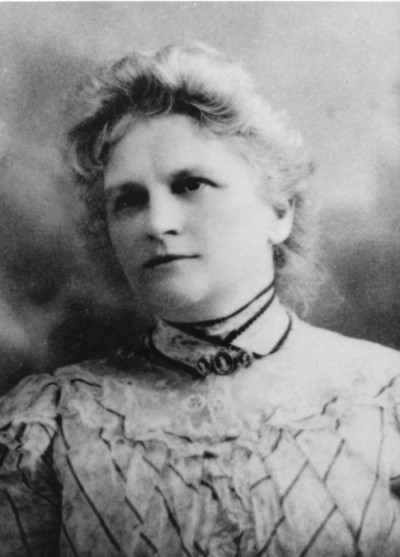Kate Chopin (Katherine O'Flaherty)

Kate Chopin was born Katherine O’Flaherty in St. Louis, Missouri. Her father, Thomas O’Flaherty, was a successful businessman who had emigrated from Galway, Ireland. Her mother, Eliza Faris, was a well-connected member of the French community in St. Louis and herself the daughter of Athénaïse Charleville, who was of French Canadian descent. Some of Chopin’s ancestors were among the first European inhabitants of Dauphin Island, Alabama. She was the third of five children, but her sisters died in infancy and her half-brothers (from her father’s first marriage) died in their early twenties. After her father’s death in 1855, Chopin developed a close relationship with her mother, grandmother, and great-grandmother. She also became an avid reader of fairy tales, poetry, and religious allegories, as well as classic and contemporary novels. In St. Louis, Missouri, on 8 June 1870, she married Oscar Chopin and settled in New Orleans. Chopin had six children between 1871 and 1879 –in order of birth, Jean Baptiste, Oscar Charles, George Francis, Frederick, Felix Andrew, and Lélia (baptized Marie Laïza)[5]. In 1879, Oscar Chopin’s cotton brokerage failed, and the family moved to Cloutierville in south Natchitoches Parish to manage several small plantations and a general store. They became active in the community, and Chopin absorbed much material for her future writing, especially regarding the Creole culture of the area. Their home at 243 Highway 495 (built by Alexis Cloutier in the early part of the century) was a national historic landmark and the home of the Bayou Folk Museum. On October 1, 2008, the house was destroyed by a fire, with little left but the chimney. When Oscar Chopin died in 1882, he left Kate with $42,000 in debt (approximately $420,000 in 2009 money). According to Emily Toth, “for a while the widow Kate ran his [Oscar’s] business and flirted outrageously with local men; (she even engaged in a relationship with a married farmer).” Although Chopin made an honest effort to keep her late husband’s plantation and general store alive, two years later she sold her Louisiana business. Her mother implored her to move back to St. Louis, so Chopin did, and the children gradually settled into life in St. Louis, where finances were no longer a concern. The following year, Chopin’s mother died. Chopin now found herself in a state of depression after the loss of both her husband and her mother. Her obstetrician and family friend, Dr. Frederick Kolbenheyer, felt that writing would be a source of therapeutic healing for Kate during her hard times. He understood that writing could be a focus for her extraordinary energy, as well as a source of income.
By the early 1890s, Kate Chopin began writing short stories, articles, and translations which appeared in periodicals, including the St. Louis Post-Dispatch. She was quite successful and placed many of her publications in literary magazines. However, she became known only as a regional local color writer and her literary qualities were overlooked. In 1899, her second novel, The Awakening, was published, and garnered a significant amount of negative press because it promoted values that conflicted with standards of acceptable ladylike behavior. Some of the most frequently referenced offensive ideas were those regarding female sexuality, motherhood, and marital infidelity. Although the novel received much negative press, some newspapers regarded it favorably. This, her best-known work, is the story of a woman trapped in the confines of an oppressive society. Out of print for several decades, it is now widely available and critically acclaimed for its writing quality and importance as an early feminist work in the South. Some of her writings, such as The Awakening, were too far ahead of their time and therefore not socially embraced. After almost 12 years in the public eye of the literary world and shattered by the lack of acceptance, Chopin, deeply discouraged by the criticism, turned to short story writing. In 1900, she wrote “The Gentleman from New Orleans”, and that same year she was listed in the first edition of Marquis Who’s Who. However, she never made much money from her writing, and depended on her investments in Louisiana and St. Louis to sustain her. While visiting the St. Louis World’s Fair on August 20, 1904, Chopin suffered a brain hemorrhage and died two days later, at the age of 54. She was interred in Calvary Cemetery in St. Louis.
Born
- February, 08, 1850
- USA
- St. Louis, Missouri
Died
- August, 22, 1904
- USA
- St. Louis, Missouri
Cause of Death
- brain hemorrhage
Cemetery
- Calvary Cemetery and Mausoleum
- St. Louis, Missouri
- USA


